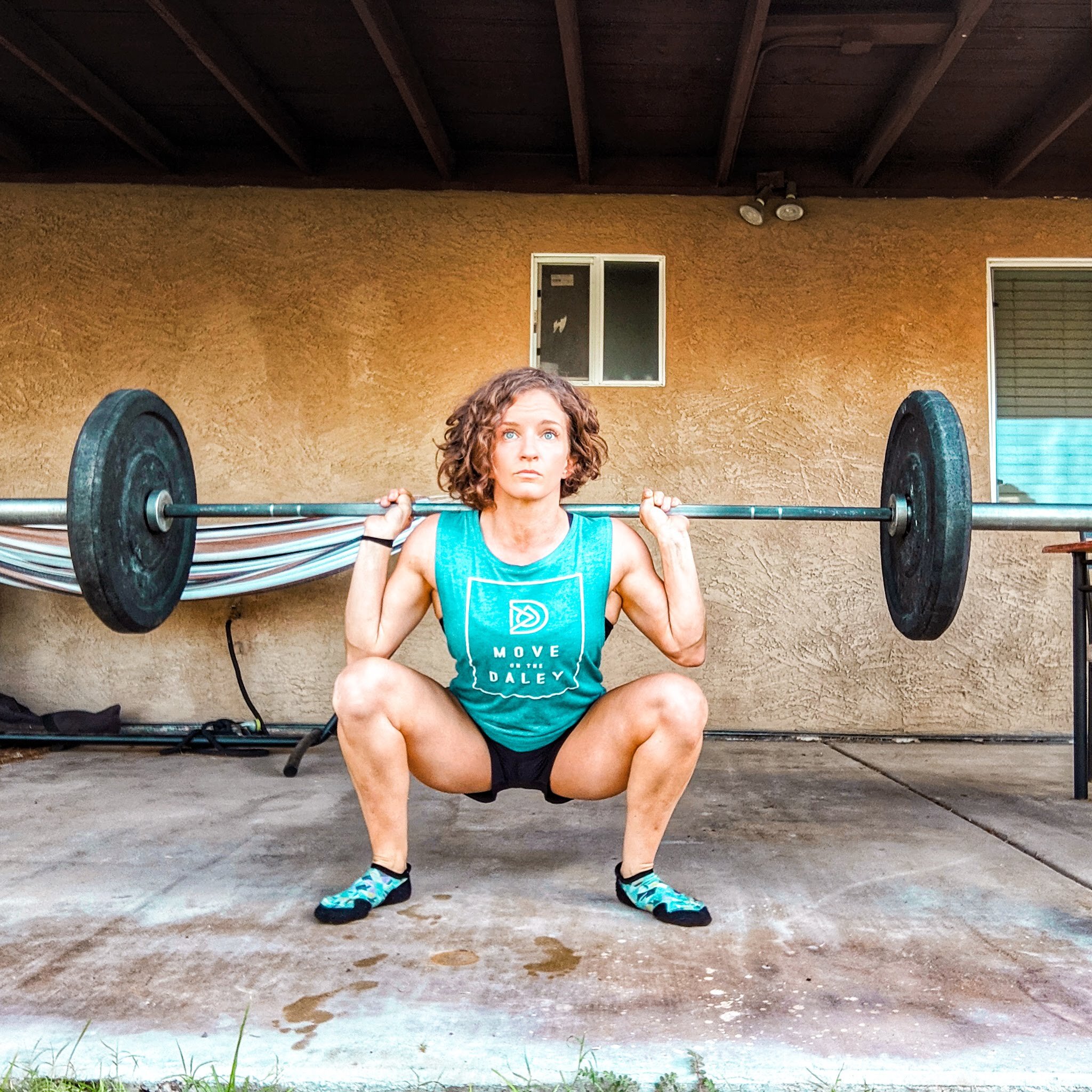DEBUNKING MYTHS ABOUT KNEES WITH SQUATTING
Jun 17, 2020
If you have been following since day 1, or if you happened to go wayyyy back in the archives, this will look familiar. But it’s a very important topic and one that I continuously find myself talking about, so it more than warrants repeating. Besides, who doesn’t need a refresher on things every now and then?! :)
MYTH #1: Deep squats will hurt your knees
This actually coldn’t be furhter from the truth. Research by Bloomquist et al showed that deep squats improved strength throughout the range of motion while shallow squats did improve strength a little more at shallow depth, but minimal strength increase at deeper positions. In other words, if you constantly squat above parallel, you’ll get stronger in that position, but not really improve strength for things like getting up and down from the floor, squatting down to pick up heavy items off the ground, catching and standing a clean or snatch at full depth. Squat jump strength also improved only with full depth squats, not quarter squats according to research by Hartmann et al.
Hartmann et al also found that the compressive forces in the knee are highest at 90 degrees and have little quad tendon support. With deeper squats, there is actually a protective wrapping effect around the knees! My mom can attest to that. One of my biggest “wins” is finally getting my mother to listen to me (seriously, it’s like pay back for not listening as a child) about squats. She does not have ACLs in either knee and then retore an MCL about 10 years ago while waterskiing. She has at least listened to me for awhile that the best thing she can do for her knees is keep up strength to create the extra support needed in lieu of those ligaments, but it wasn’t until the last 6 months that she started taking action. She finally started doing a few exercises I had previously written for her including some goblet squats with increased weight. However, she’s been scared to squat below parallel, so she had started doing them, but restricted the depth. When she called me up and told me her knees were achy, one of the first things I asked was how deep she was squatting. I explained the above research and told her to just give going below parallel a shot for a few days and call me back. Guess what?! Her knee pain was GONE!
MYTH #2: Don’t let your knees go past your toes.
Absolute BS. Contrary to popular belief, your kneecaps will be perfectly fine if they go past your toes. They won’t shatter or shoot across the room. In fact, I can personally say that the first time I really felt my quads fire during a squat was when I finally let my knees go past my toes. It’s also the first time I didn’t end of having soreness in my low back after a bunch of squats. In fact, it may actually be worse for you to restrict your knee movement. Fry et al did some research looking at joint forces at the hips and knees when knee movement is restricted to avoid going past the toes or allowed to do so. They found that if it is restricted, there’s a 1000% increase in hip forces. One-freaking- thousand. It also caused your torso to come more forward since the hips had to stay back. This then places more pressure on your back. Between those factors, it’s no wonder my back was getting sore with back squats! Some of whether or not your knees need to come forward and the degree to which they do is definitely dependent on your specific anatomy. However far forward they need to be to allow overall good positioning. You want that chest up, spine neutral, and the weight over your midfoot. Oh, and you do still want the knees TRACKING over the toes (ie not caved in). But overall, the joint forces when you allow the necessary forward translation of the knees are FAR better than if you restrict them.
MYTH #3: Your knees can NEVER cave in
Okay, this one’s a little more complicated. Because you don’t want them to cave in, but there is a time where it’s okay for a quick movement in that direction and then immediately back out. A movement called the adductor whip.
Here’s a video of Mattie Rogers, an incredibly accomplished weightlifter, where you can see this happen. This is clearly not a case of glute weakness (what we often attribute for the knees caving in for sustained amounts of time). And it’s not something I’d try to train her out of. Now, if the knees went in like that, and didn’t push back out? Different story. And if they caved in while she was going down into the squat? Also not good. But what you see here is totally fine and not causing any kind of damage.
I do have another blog that goes over hip position with squatting that you can check out here
And if you are having pain with a certain lift/movement and want it assessed, or just want to dial in technique, I do offer movement assessments.
SUBSCRIBE FOR WEEKLY LIFE LESSONS
Lorem ipsum dolor sit amet, metus at rhoncus dapibus, habitasse vitae cubilia odio sed.
We hate SPAM. We will never sell your information, for any reason.

